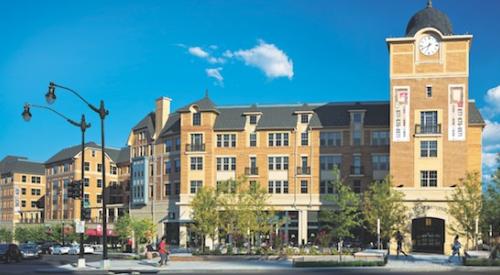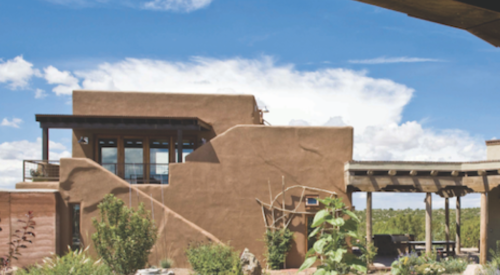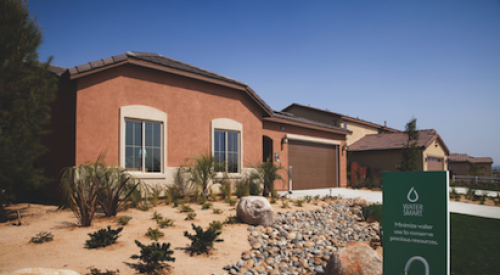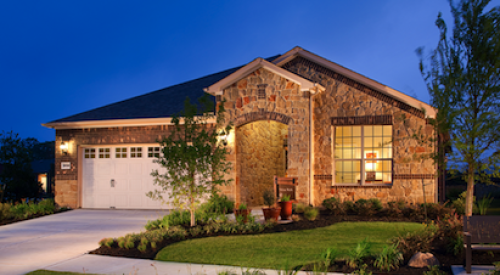| The homes at Wiggins Creek present a traditional streetscape that is in keeping with the image of the University of the South. The six homes in phase one are grouped around a common green. |
In Sewanee, Tenn., a town with approximately 2,500 year-round residents, life revolves around the University of the South. Founded by Episcopal Church leaders in 1857, the university occupies a 10,000-acre campus atop a high plateau. Housing is limited, consisting mainly of high-end vacation or retirement homes and fixer-uppers built in the 1940s and ’50s.
Recognizing that a housing alternative was needed to attract and keep high-caliber professors, the University of the South designated 80 acres of the campus for a new community, Wiggins Creek. Looney Ricks Kiss, a Memphis-based architecture and planning firm, was hired to research the market, create the site plan and design the homes.
| Rather than stick to a single theme, Looney Ricks Kiss designed a mix of traditional, colonial and cottage/bungalow styles for the development. |
"We provided a master plan with 60 to 80 total lots," Carson Looney says. "Because of the topography, the housing was very spread out. We tried to group it in little pods or enclaves, but you would have to drive from one terrain to the other to have a buildable area." The overall density was 2.06 units per acre, with about 60% of the site dedicated to open space.
Along with Peter Beasley of Gooch Beasley LLC, a Memphis home builder it had worked with at the neotraditional Memphis community Harbor Town, Looney Ricks Kiss interviewed prospective buyers. The architects soon realized they had a spec/custom market at Wiggins Creek. "I think many developers would almost fear that, but everybody we met with was very realistic," Looney says. "They might prefer brick or siding, or want to capture a view, or the front was more important than the rear - that kind of thing - but no one wanted to blow the size of the house up."
| Every home has an 8-foot front door. "That did cost more, but it sets the stage for the house," architect Carson Looney says. |
The site’s topography made it challenging from design and construction standpoints but also added to the aesthetic appeal. In addition to being hilly and heavily forested, the property adjoins a lake. So that residents would have complete privacy, the university mandated that none of the homes be visible from the water. The lots are approximately 50 feet wide and 300 feet deep and back up to the lake.
Gooch Beasley built six detached homes in the first phase, ranging from 1,800 to 2,000 square feet and sited around a common green. Sale prices ranged from $130,000 to $165,000. So that they would blend with other campus buildings, the 11/2- and two-story homes are a mix of traditional, colonial and 1930s cottage/bungalow styles. To keep costs down, "we couldn’t use the wonderful stone and other materials that the school uses, but we wanted to capture that essence, not just create a typical subdivision," Looney says. Although the homes are relatively small, they’re designed for entertaining. "They’re not totally open plans, but there’s an open feel. You could have eight, 10, 12 people over."
| Stock trim, such as chair rail and crown molding, is a cost-effective way to dress up interiors. Shown is the Sewanee Residence, which won a gold award for best single-family detached home, 1,801 to 2,400 square feet, in the 2000 Best in American Living Award competition. |
Making modestly priced houses look expensive is a matter of scale and proportion, Looney says. The front doors are 8 feet tall, a feature that costs $1,000 per house. And although they aren’t lavishly appointed, the interiors have a lavish feel. Stock trim is used for doors, windows, chair rail, baseboards, crown molding and fireplace surrounds. Other details include tray ceilings and staircases with curved handrails and carved banisters. Beasley says some of the houses have upgrades such as hardwood floors, cabinets with glass doors, and Mexican floor and wall tile in the kitchen.
The homes are built on raised foundations with exterior facades of brick, fiber-cement siding or a combination of the two. Covered entry porches with columns, dormer windows and gables distinguish the front elevations.
The university offers buyers a long-term land lease, or they can lease both the home and the lot. The latter option appeals to faculty members who are not tenured or plan to stay at the university only a short while. "Some professors move around," Looney says. "By leasing, [the university] attracts some good talent, and the person would have a great place to live but not have to make a major financial commitment."
| The family room of the Sewanee Residence is comfortable and functional, with built-ins surrounding the fireplace. A tray ceiling enhances the room’s feeling of spaciousness. The triple window overlooks a 300-foot-deep back yard leading to a lake. |
All six homes in the first phase sold during construction. "Effectively, they sold five houses in five minutes," Beasley says. "Eventually the sixth one sold, but the buyers got a divorce right before they were ready to move in, and it went back to the university as rental property." That home has since been leased.
Hard costs in phase one were approximately $75 to $85 per square foot, a bargain in Sewanee, where new construction runs $130 to $140 a foot or higher. "There is very limited housing up here for faculty and staff, and no housing that’s really of any great quality," says Beasley, who now runs a thriving custom home business several miles away in Monteagle. "The phase one homes are really nice, and the ones that are being built that [Gooch Beasley] didn’t have anything to do with are very nice. The vice chancellor retired in Wiggins Creek. I think it speaks highly of the project."
| Faculty members weren’t looking for a lot of square footage, but they did want floor plans that would accommodate small gatherings. The Wiggins Creek homes allow for good circulation in areas where people tend to congregate, such as the kitchen and family room . |
Thanks to the project’s initial success, subsequent phases are under way. At press time, another 10 homes had been completed and three more were under construction. They are somewhat larger than the phase one homes, but none is more than 3,035 square feet.
Because the university owns the land and paid the development costs, Wiggins Creek wasn’t driven by a conventional profit motive. "This housing option was something the university saw as adding to their package of amenities for the professors," Looney says. "It wasn’t like your typical developer where they’ve got carrying charges and the interest [clock] is ticking and they’ve got to move so many lots."
He likens Wiggins Creek to company towns of the 1920s. "The idea that a university could have an impact and not just provide a place to work, but think about how people need to live - maybe there’s a good market opportunity there. It’s something that businesses and institutions could look at again."
Also See
At-Home Architecture
Windward's Casual Coastal Estate
Prospecting for Design Gold












